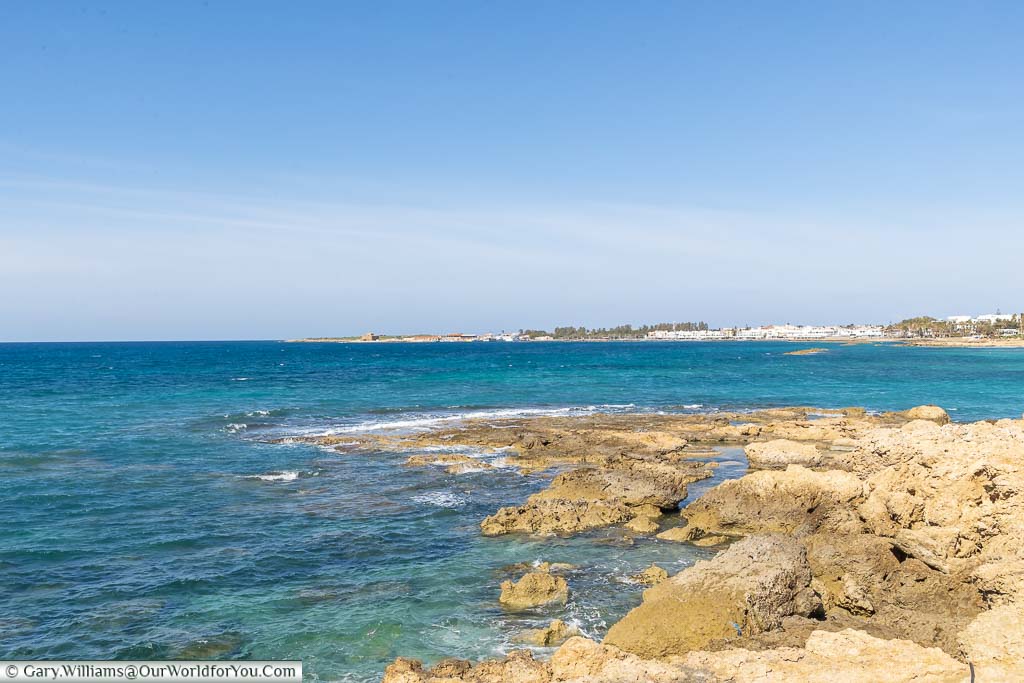Ancient relics at your feet
The historic coastal city of Paphos is located on the far southwestern shores of Cyprus, where crystal blue seas stretch as far as the eye can see. Here on the island’s tip, thousands of years of rich history can be explored.
The captivating location you’ll undoubtedly want to visit in the ancient city Paphos is the astounding UNESCO Nea Pafos Archaeological Site.
The breath-taking prehistoric ruins just by Paphos harbour were inscribed onto the World Heritage Site in 1980, along with the Tombs of the Kings further around the bay.
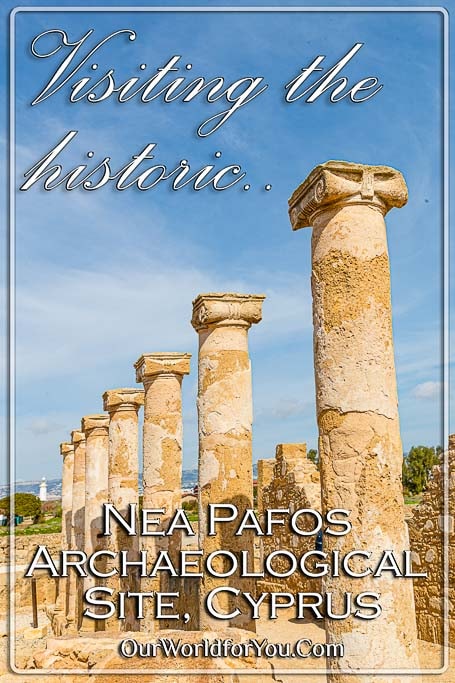
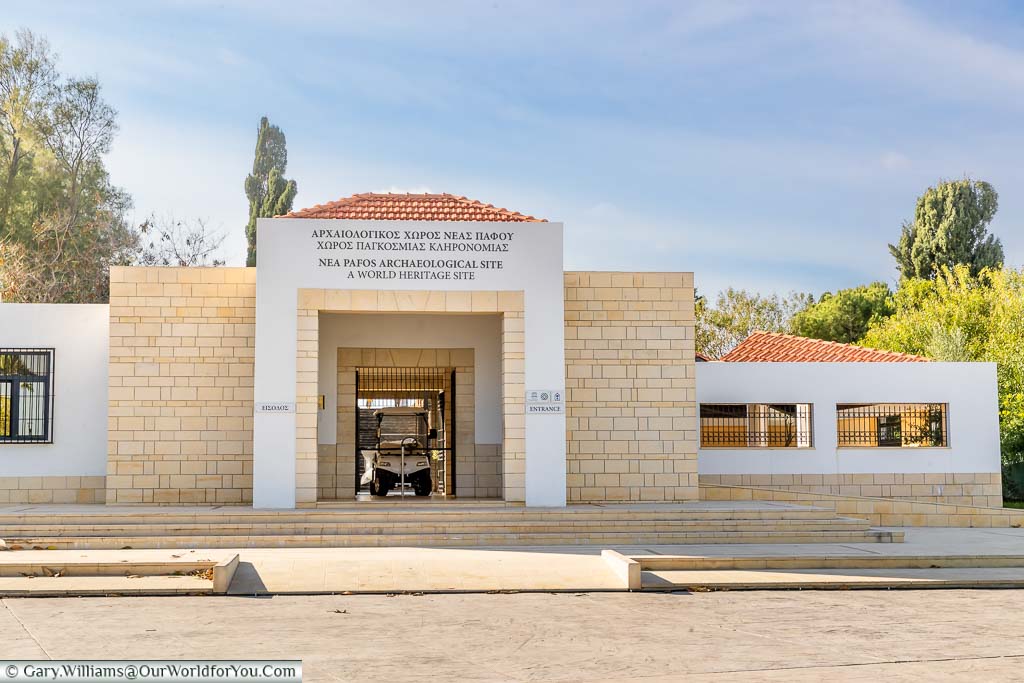
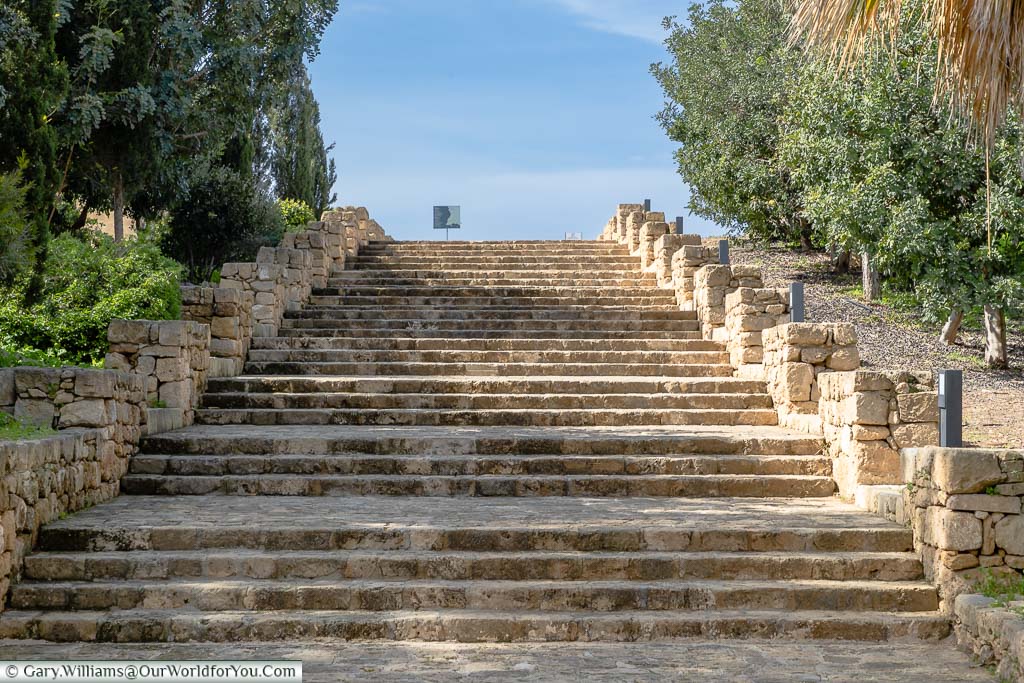
Where is the Nea Pafos Archaeological Site
How to get to there
- By Air
Here are your UK departure options for Jet2 flights to Cyprus;
- Belfast (BFS)
- Birmingham (BHX)
- Bristol (BRS)
- East Midlands (EMA)
- Edinburgh (EDI)
- Glasgow Intl (GLA)
- Leeds Bradford (LBA)
- London Stansted (STN)
- Manchester (MAN)
- Newcastle (NCL)
The House of Aion
Intricate mosaics from the 4th-century ADThe Kato Pafos Archaeological Park is one of the most significant sites in Cyprus and houses ruins dating from the 4th century BC to the Middle Ages and is still being excavated today.
The first stop on our self-guided tour was to the villa of The House of Aion. Located here are some of the most detailed mosaics in the Archaeological Park dating from the middle of the 4th-century AD. The protected Roman mosaics are within a covered building, and the principal artefacts depict different mythological scenes.
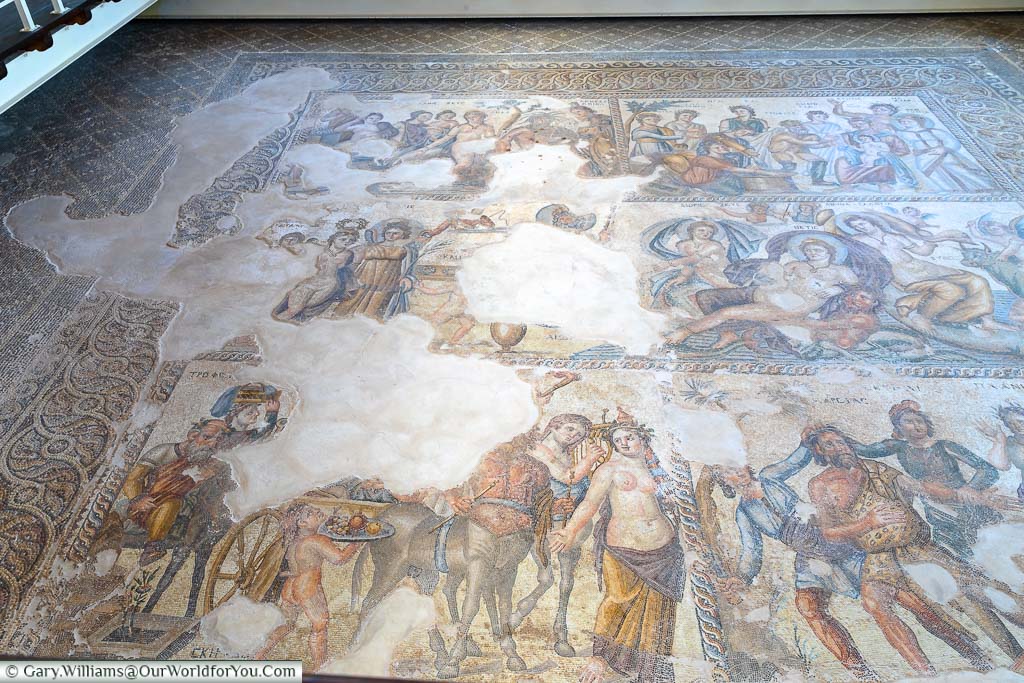
The Villa of Theseus
The grandest house of them all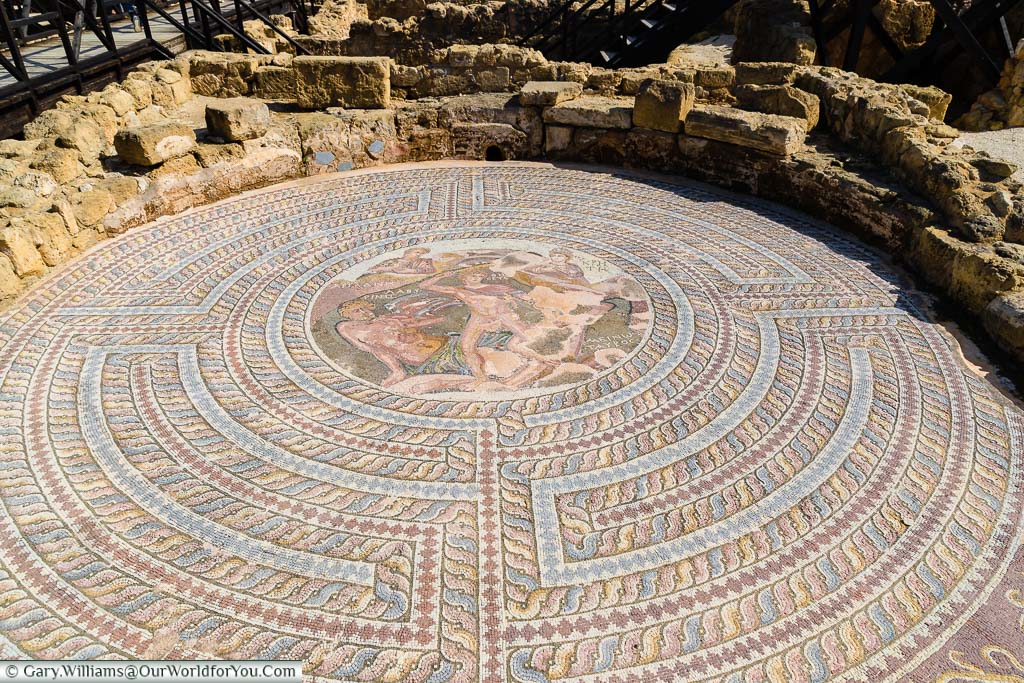
The huge size of the villa indicates that it would have been the residence of the Governor of Cyprus. The villa was occupied until the 7th-century AD.
Stepping up onto the raised platform within the archaeological park, you get a true indication of its enormity. The building was organised in four wings and surrounded by a central collonaded courtyard.
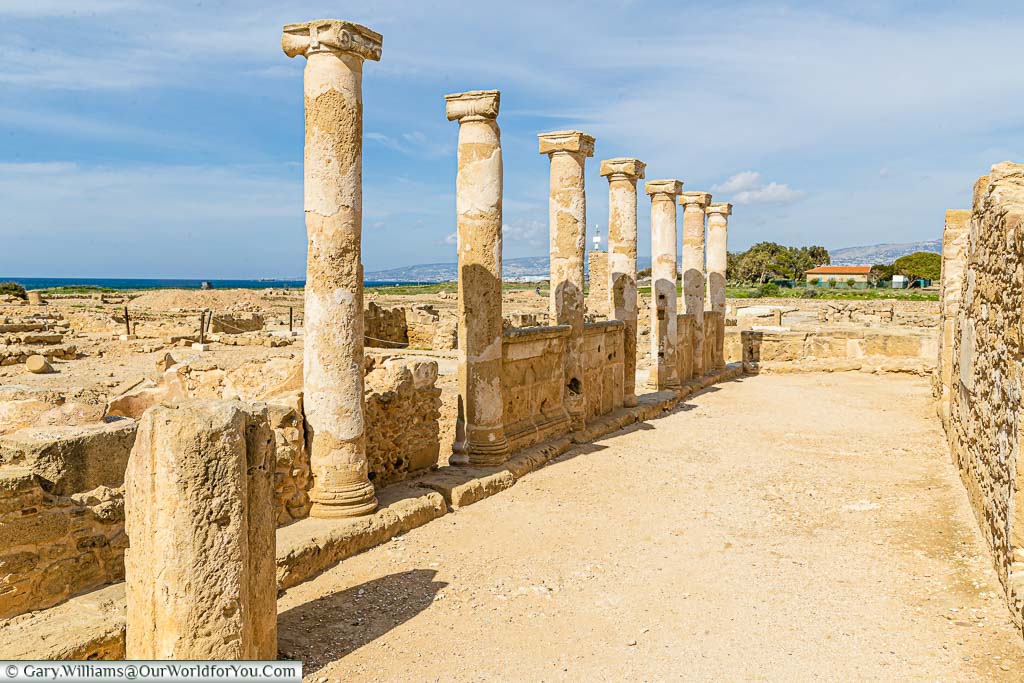
Beautiful mosaic floors can still be seen amongst the ruins and detailed symmetrical motifs. Mosaics were still being added to the villa during the 5th-century. The prominent and oldest mosaic represents Theseus and the Minotaur, which dates from the end of the 3rd-century or early 4th.
What I found unbelievable is the access you are allowed with the archaeological site; you’re rubbing shoulders with thousands of years of breath-taking history.
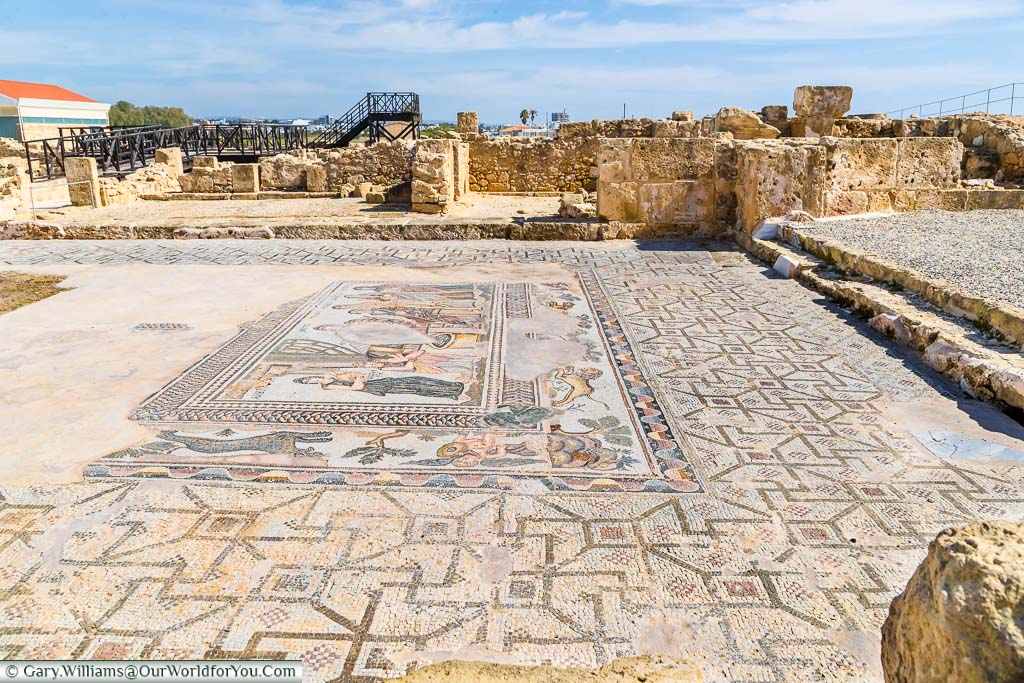
The House of Dionysos
Astounding intricate mosaics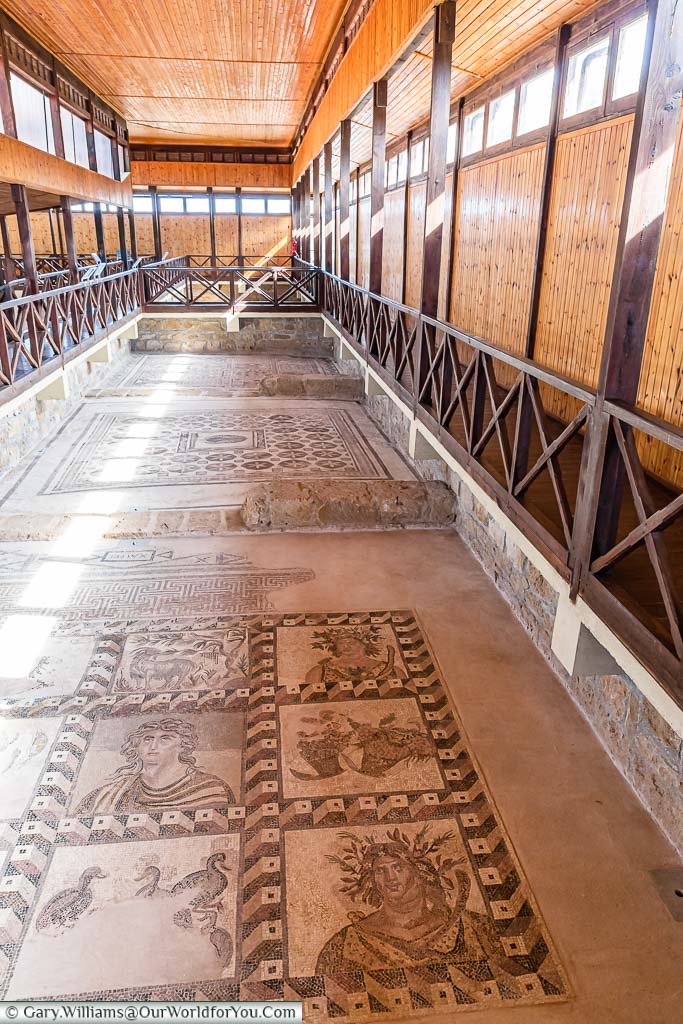
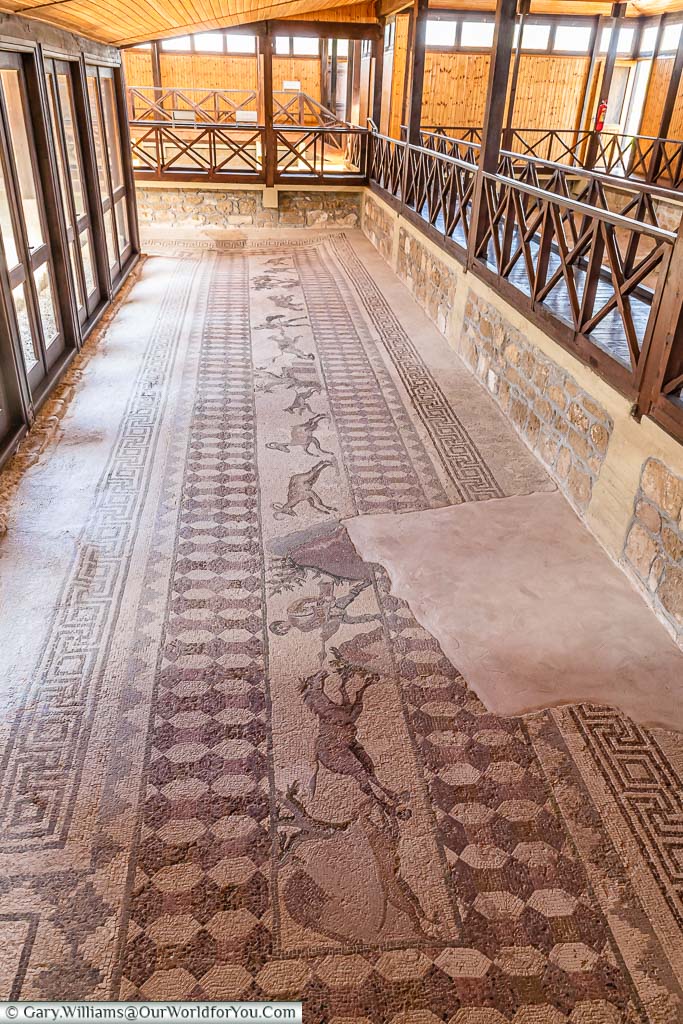
Our next stunning sight was at the House of Dionysos. This Greco-Roman type of house once occupied 2,000sq metres, and the rooms are arranged around a central court.
Incredibly 556 metres of the House of Dionysos are covered with intricate mosaics. To protect the importance of this excavation, a building has been erected over the floors. You can stroll around a raised platform to fully appreciate the detail of the scenes of the mosaics.
Many of the floors are decorated with hunting scenes and the Greek god of wine, Dionysos, whom the house is named after.
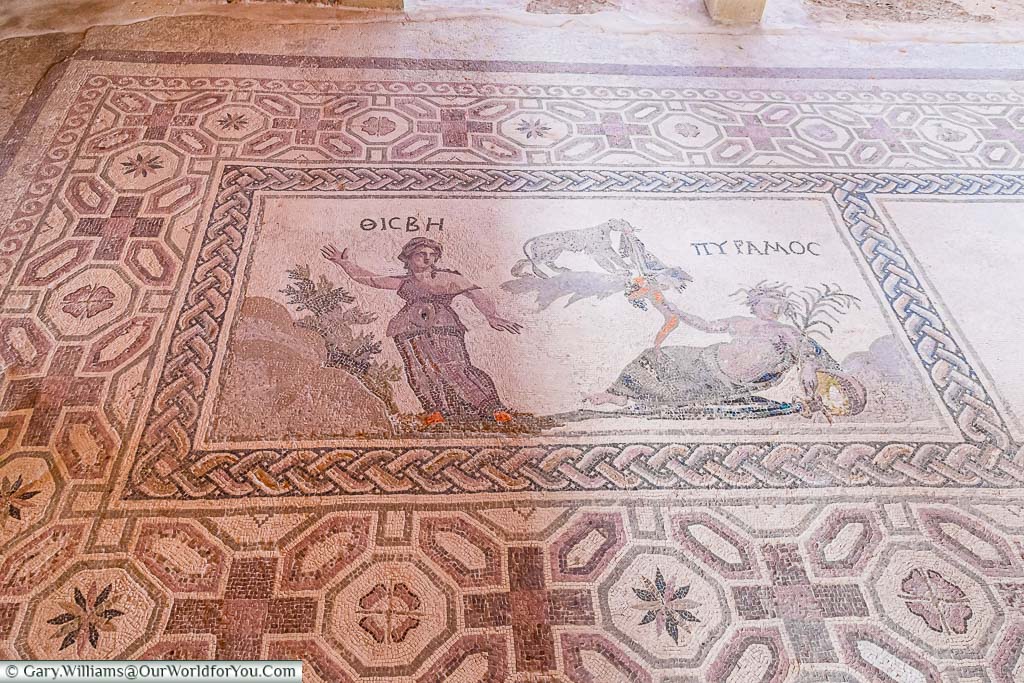
The striking Odeon
Overlooking the ancient AgoraThe magnificent ancient Odeon, which is a 2nd-century theatre, looks stunning. Since its discovery, the amphitheatre has gradually been restored and is now often used for theatrical and musical performances. I can imagine it would be amazing watching an open-air production here.
It is built of carved limestone and is believed to have been used by the Romans until the 5th-century.
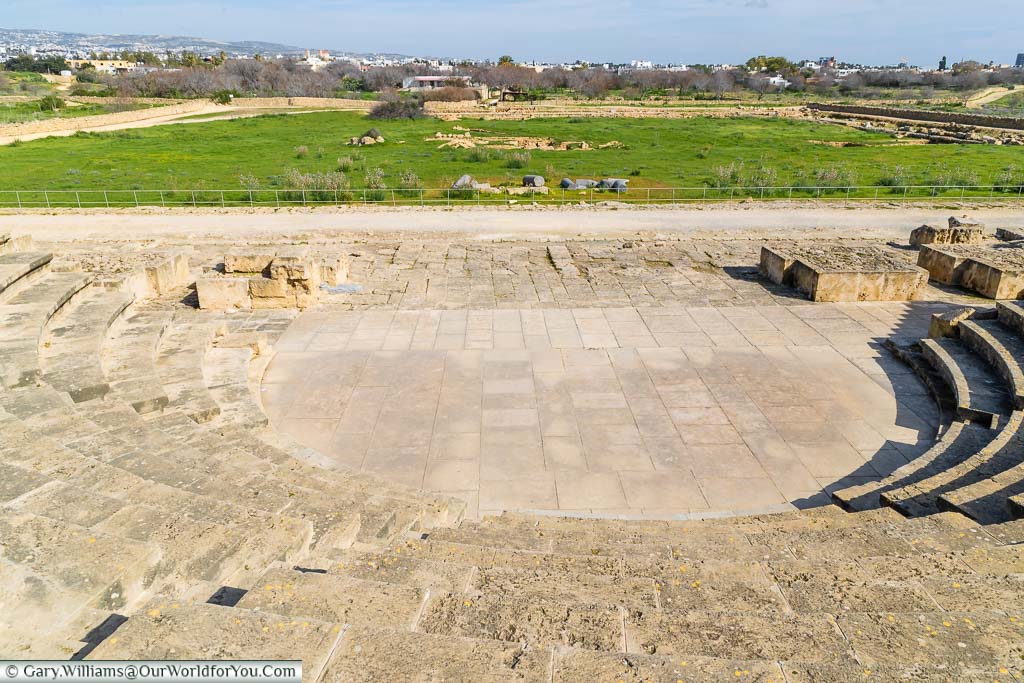
The Odeon overlooks the vast Agora or forum, which was once a central square court. It must have looked magnificent when it was originally surrounded by four porticos of granite columns and white marble.
The whole complex of the Odeon, Agora and the Asklepieion dates from the 2nd-century BC to the 2nd-century AD.
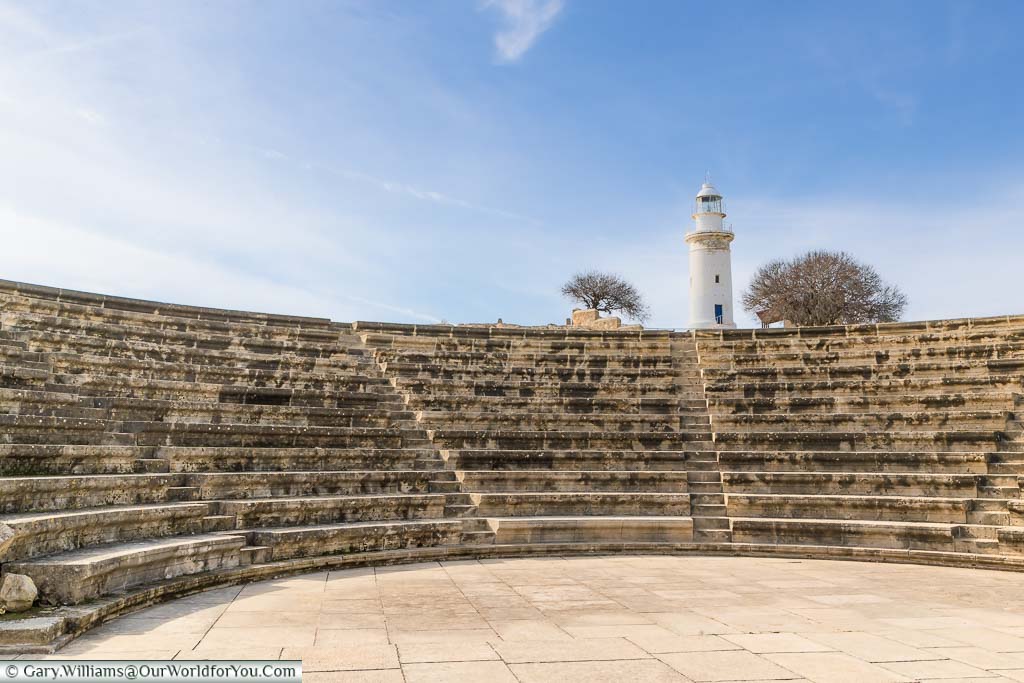
Exploring Toumpallos
Going undergroundThe Toumpallos part of the Paphos archaeological park is fascinating. It is a complex of underground halls, caves and corridors carved into the natural rock. It’s quite bizarre.
Once again, you are free to discover the site at your own risk and venture off and explore the underground passageways as you wish.
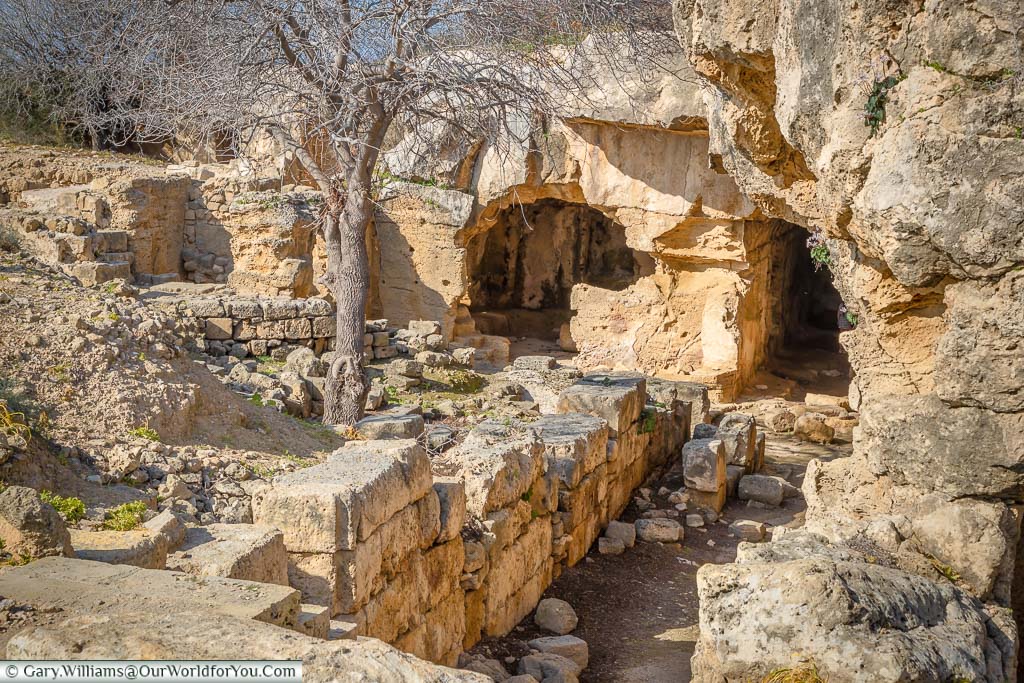
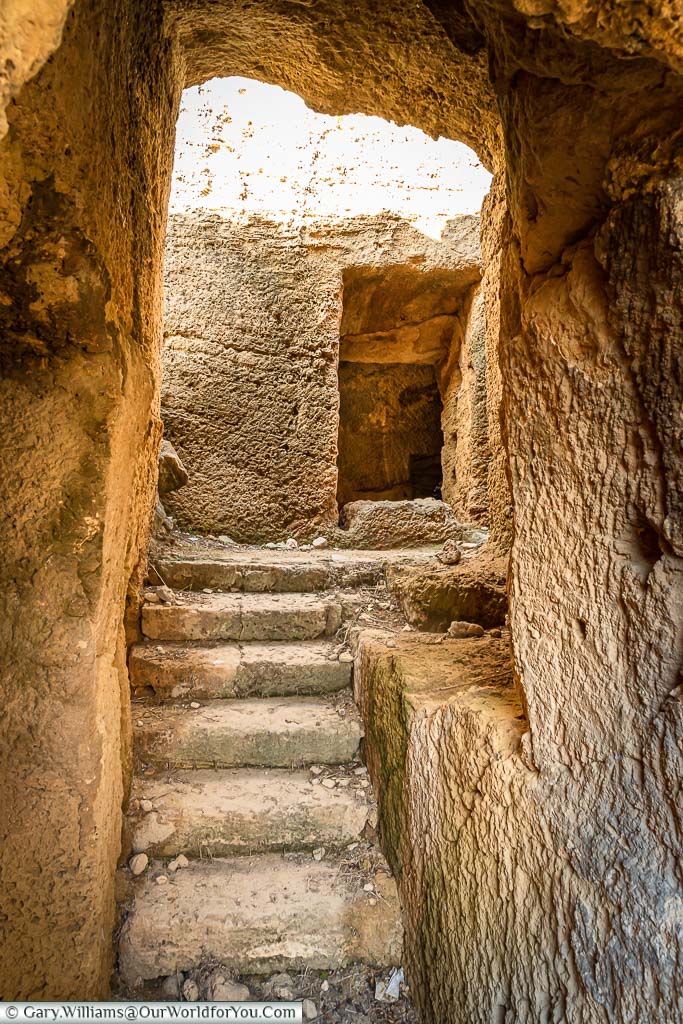
The Saranda Kolones
The castle of Forty Columns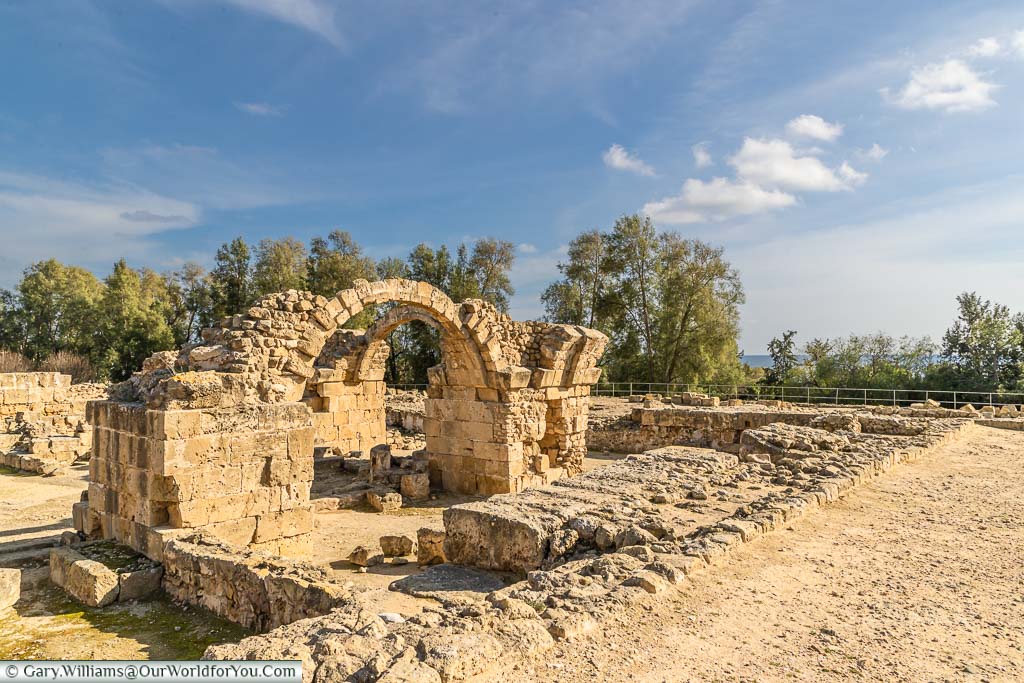
The castle was built around the 7th-century AD; this historic landmark has many preserved granite columns, hence the name. The castle would have once served to protect the port and the city of Nea Pafos from potential Arab raids.
The Saranda Kolones remained in use until 1223, after a devastating earthquake destroyed it.
The Lighthouse
An icon in Paphos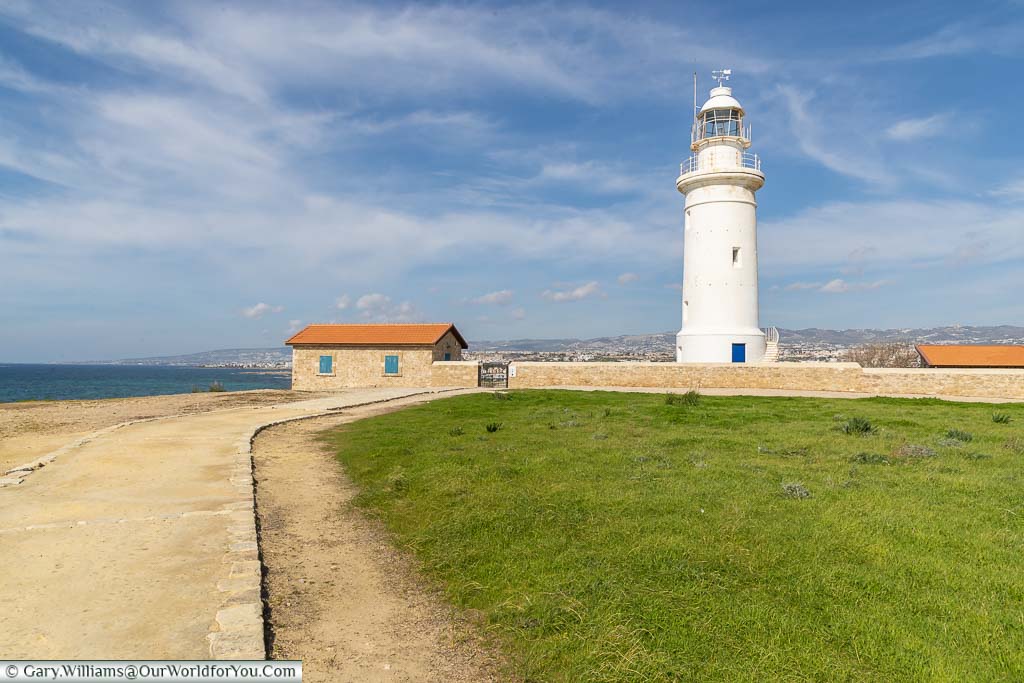
It has become quite a landmark across the Paphos skyline and is situated 36 metres above sea level.
The lighthouse acted as a landfall marker for ships heading for Paphos harbour from the UK. Its flashing light can be visible for 17 nautical miles.
Good to know
Tips on visiting the historic Nea Pafos Archaeological SiteThe sites are partially wheelchair accessible.
The archaeological site is open all year round, excluding public holidays.
Summer entrance times: 16th April to 15th September, 08:30 - 19:30
Winter entrance times: 16th September to 15th April, 08:30 - 17:00
The entrance fee is €4.50
In my opinion, you will need to allow at least 2 hours to explore the ancient park as it is incredibly fascinating.
Don’t forget to download the UNESCO app when you arrive; it is full of interesting facts to help you navigate the site.
Ensure you’ve doused yourself in sun-cream. Don’t make the same mistake as me, as there are very few shady spots.
Venturing off with Jet2holidays to Paphos
The perfect way to relax and enjoy CyprusJet2holidays offers several departure locations around the UK, we selected to hop aboard the Jet2holidays flight from London Stansted Airport. Stansted Airport is easily accessible by car from the M11 motorway. You can catch the Stansted Express rail link from London Liverpool Street, which departs every 15 minutes.
If you choose the driving option, you can book your car parking through the Jet2 Extras website, and you’ll also get a discount.
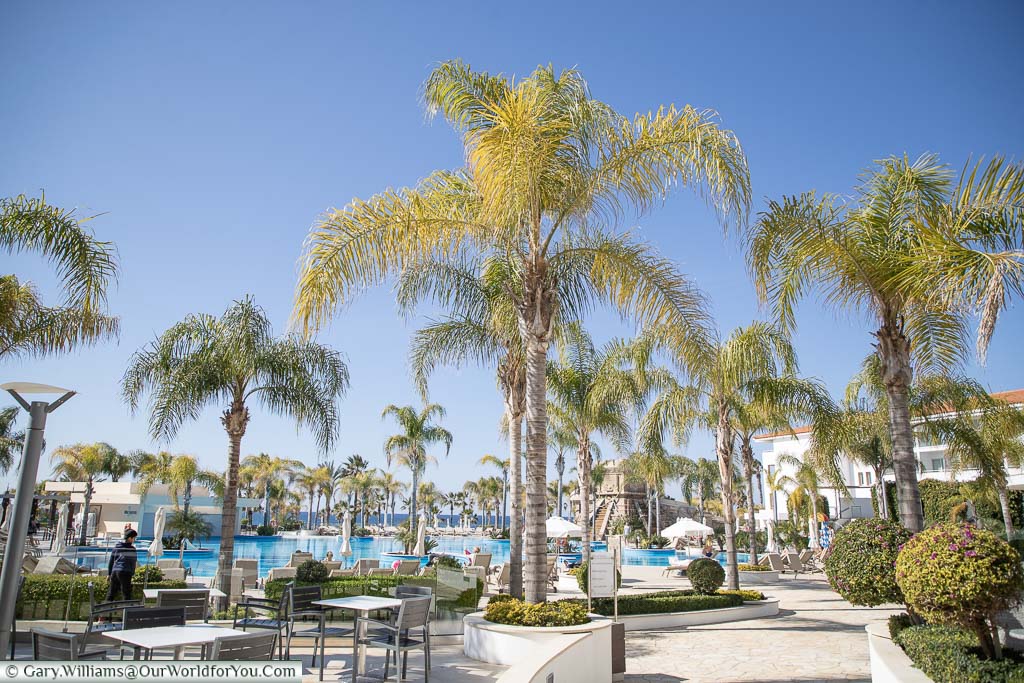
Our experience during our Jet2 flights to Cyprus was incredibly smooth and stress-free.
When you hop off your flight at your chosen destination, you’ll have the comfort of knowing that your hotel transfer awaits. Also included in your package holiday to Paphos, you’ll have a generous baggage allowance of 22kg and a hand luggage allowance of 10kg.
If you wish to make the whole in-flight experience even less stressful, you can pre-book your seats and meals for a charge.
Additionally, ensure you download the Jet2holidays app; it is effortless to manage your booking.
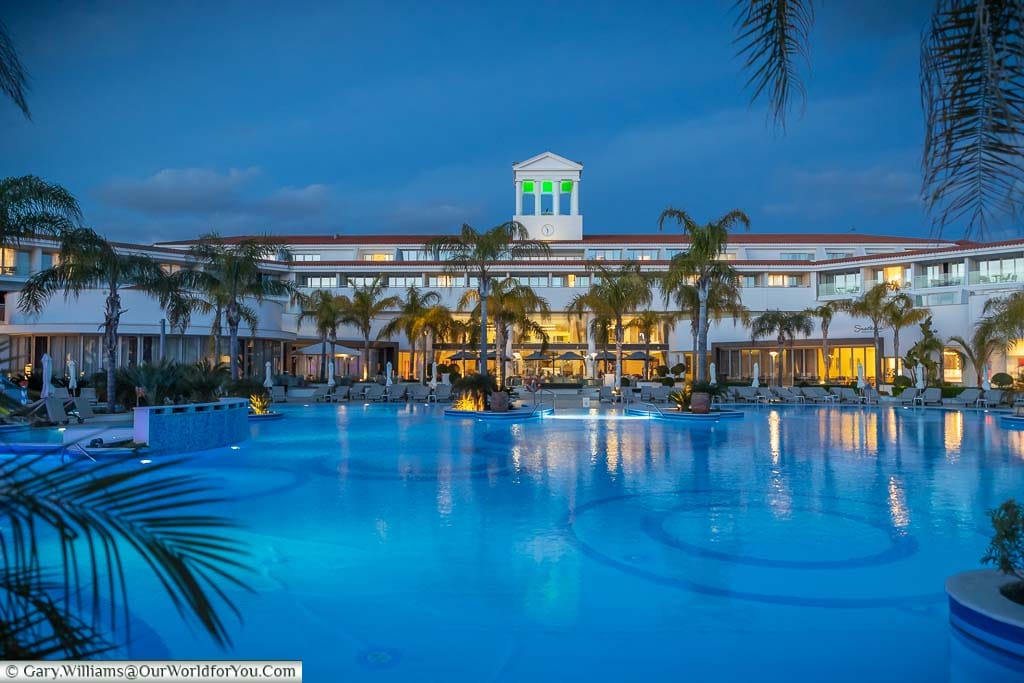
If your perfect break is relaxing under palm trees by the poolside of a stunning all-inclusive beachfront resort, we highly recommend the 5-star Olympic Lagoon Resort Paphos with Jet2holidays.
The beautiful Olympic Lagoon Resort surpassed all our expectations, from the moment we stepped through the doors and observed the ocean view beyond until we said our final farewells to the ancient city of Paphos.
This was our first adventure on an all-inclusive holiday with Jet2holidays, so it would be a new and enjoyable experience all around.
Discovering more of Paphos
If you want to discover more of Cyprus, then why not check out our post 'Escape to the winter sun in Paphos, Cyprus.'
Stroll along the coastal path to the harbour, explore its historical sites, or even pick up a car with Jet2 Extras and venture further afield.
Disclaimer
We were invited to Cyprus as guests of Jet2holidays to stay at the Olympic Lagoon Resort Paphos. However, all our views, opinions and personal experiences are our own.
Would we recommend a winter sun stay at the Olympic Lagoon Resort Paphos with Jet2holidays? Unequivocally yes, we would return tomorrow. You instantly start to unwind and feel a wave of relaxation flow through you.
* This post may contain links to affiliated sites where we earn a small commission at no additional charge to you.
